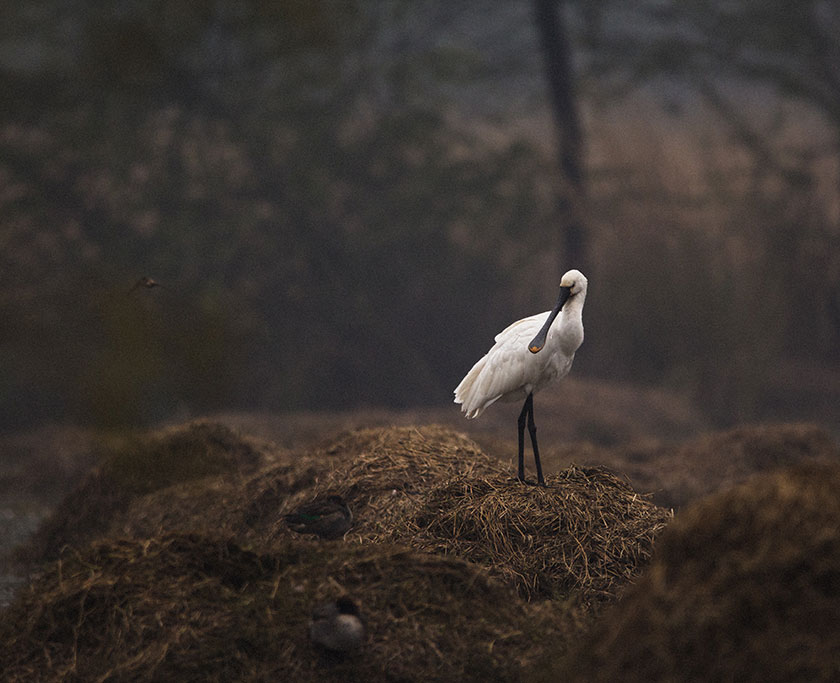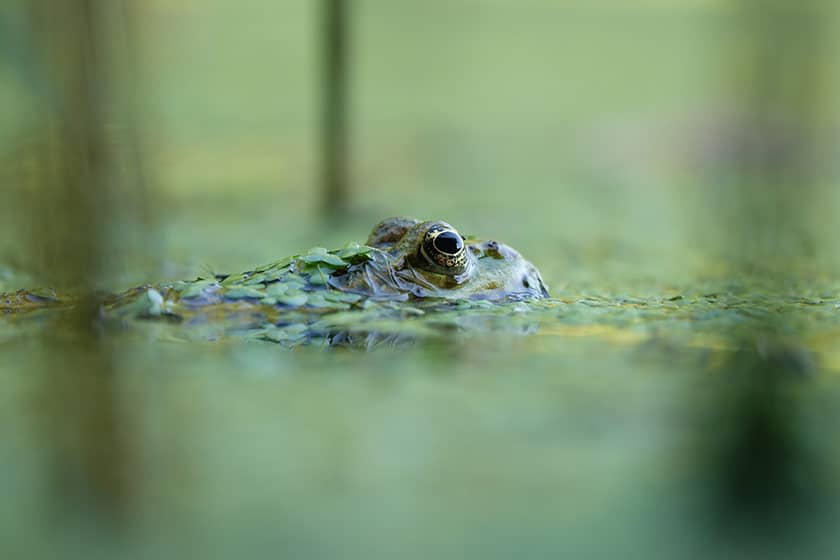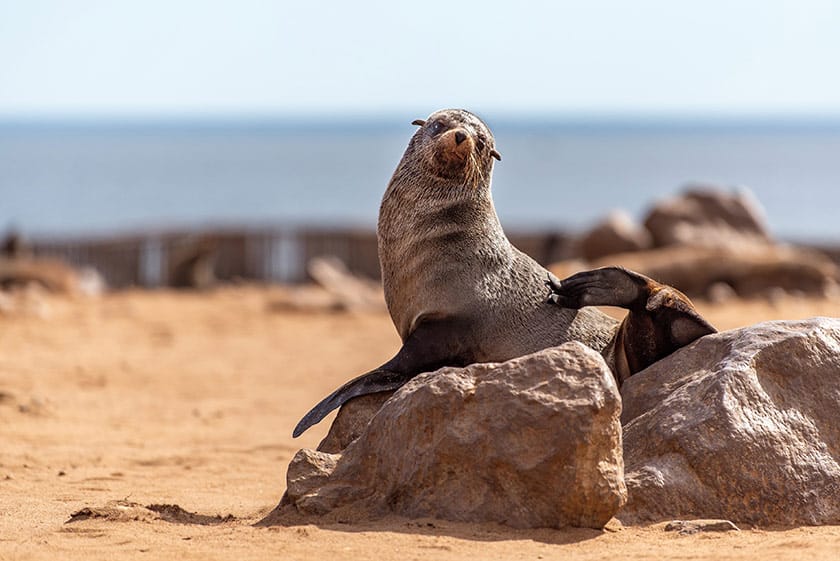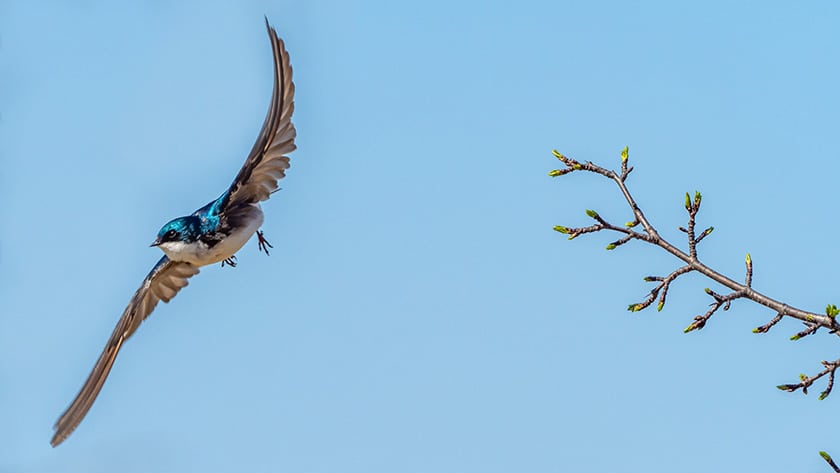Professional wildlife photography.
If you love venturing into the great outdoors with your camera and are happiest spending lots of quiet time alone, a career as a professional wildlife photographer might be for you. Unlike many other photography gigs that require a lot of interaction with people, motivating, posing, and capturing emotions, wildlife photography rewards patience and stillness as you wait to capture the perfect shot.
Ready to learn more about this covetable career? Read on!

How much do wildlife photographers make?
If you’re thinking about entering the field of wildlife photography, you’re likely wondering how much you can expect to earn on the job. As with other photography niches, there are lots of variables that can impact your earning potential.
Let’s dive into what you can expect to earn as a wildlife photographer.
Wildlife photographer salary.
Photography is one of those professions in which a fairly broad range of incomes are reported, with the highest earners commanding top dollar and many others needing to supplement their income with other sources to make it work.
On average, Ziprecruiter reports an average annual salary of $40,474 for photographers in the related field of nature photography in the USA. Those in the top 10% of earners take home about $57,000.
Earning potential can be impacted by variables such as:
- Geographic location
- Experience
- Type of clients
- Time in industry
Depending on your clients, you may also enjoy some other benefits on top of your shoot fee, such as compensation for travel.
Demographic data from the State of the Photography Industry report.
Wildlife photography is one of the smaller niches within the broader field of photography. The 2022 State of the Photography Industry Report from Zenfolio, which surveyed 3,398 photographers from 97 countries, identified portrait, landscape, and wedding photography as the most popular niches. Wildlife photography was practiced by about 4.5% of respondents.
The same survey found that many photographers work in multiple specialties. For example, since landscape photography is a bigger niche than wildlife photography, combining these two may help you book more work and create a more lucrative schedule for yourself.
Wildlife photography gear.
Photographing wildlife generally requires specialized equipment; a regular point-and-shoot won’t cut it in most situations. As a wildlife photographer, you may be shooting quick action such as an animal running or a bird in flight. You may also require equipment that enables you to shoot in great detail even from a far distance.
Here’s what to look for when selecting all the main components of your camera kit.

Best lenses for wildlife photography.
When choosing a lens, it’s helpful to know what kind of wildlife you plan to shoot. In general, a zoom lens will give you more flexibility, which is particularly helpful if you’re newer to this type of photography. However, opting for one or more prime lenses will be preferable if getting ultra-sharp images is a must for you.
A focal length of around 400mm is often used for shooting larger wildlife, but if you want to capture birds, having a lens that goes up to 600mm can be preferable.
Best camera for wildlife photography.
Shooting wildlife often requires hiking into areas that aren’t directly accessible by car. This means that lightweight, easy-to-handle camera bodies are a plus. However, you should also look for a camera that is robust enough to handle being used in challenging conditions such as dust and rain.
When it comes to choosing a DSLR or mirrorless body, it comes down to your personal preference. DSLRs are heavier, but some people prefer that they feel sturdy and have superior weather sealing. Mirrorless cameras have come a long way, producing excellent image quality at a lower cost and lighter weight than their DSLR counterparts.
If you don’t have any equipment yet, a mirrorless is likely a better choice. However, if you already have a DSLR and accompanying lenses that are working well for you, there’s no need to switch.
Best tripod for wildlife photography.
A good tripod is a must for getting sharp wildlife shots. This is especially true if you’re waiting for a long time at a single location waiting for an animal to appear. The tripod can relieve you from the weight of your camera and lenses, while also eliminating shake from your images.
The toughest, lightest tripods are generally made of carbon, but these can be quite expensive. A lower-cost alternative material is aluminum.
Monopods can also come in very handy. These have a single foot that helps to support the weight of your camera while still giving you plenty of mobility as you shoot.
Filters for wildlife photography.
Filters help you get better images right out of your camera even in challenging conditions, and they also provide a layer of protection for your lenses.
The main types of filters to consider include:
- UV Filters: These help to protect your lens from damage. A new filter is cheaper than a new lens so having that extra line of protection against scratches and other damage could be a lifesaver. UV filters also help to cut through atmospheric haze so you will have better clarity, especially when shooting in hazy conditions.
- Polarizing Filters: These will filter out glare and reduce shiny reflections in your images.
- Neutral Density Filters: While not used as commonly in wildlife photography, these can help you reduce the amount of light hitting your camera sensor. This is particularly helpful for creative shots when you may want to shoot with long exposures to make water or clouds look smooth and like they’re in motion without overexposing your photos.
How to become a wildlife photographer.
While there’s no single path to becoming a wildlife photographer, there are a few things that just about every successful wildlife photographer will tell you to focus on. Whether you study photography formally or you’re self-taught, take these steps to get your wildlife photography career off the ground.

Know your subject.
Whatever kind of wildlife you choose to shoot, you must spend some time familiarizing yourself with its behaviors and habitat. This will give you the best chance of getting those National Geographic-worthy shots. This step is also important because you can identify if there are any safety precautions you need to take to protect both yourself and the wildlife you are photographing.
Put together your kit.
Wildlife photography requires equipment that the average amateur photographer might not have. For example, you’ll need longer lenses than are required for more popular photography niches, like portraiture. You’ll also want a comfortable bag that you can wear to your shooting destination and comfortable clothes that allow you to blend in.
Shoot frequently.
This will likely come as no surprise, but the more you shoot, the better your images will get. If you’re serious about becoming a professional wildlife photographer, finding the motivation to get out there and shoot regularly is the best way to develop your skills and build up an impressive collection of images.
Put together an online portfolio.
Once you have a selection of images that you’re proud of, put them together in an online portfolio. An online portfolio is a must for any aspiring professional photographer since it gives prospective clients and fans a place to see all your work and get a sense of your style as well as your personality.
Pitch and submit your work.
With a portfolio to direct people to, you can start pitching your work to clients, magazines, and photography contests. A big part of being a professional photographer is being proactive about getting your name out there and landing work. The more you do this, the more comfortable the process will become.
How to take professional wildlife photos.
Be patient.
Patience is the name of the game when it comes to wildlife photography. Sure, there may be times when you get lucky and the subject you want to capture is around as you’re setting up. But often, the best professional wildlife photographers are the ones who understand the value of waiting until the perfect moment appears.
Respect your subject.
Keeping your distance to avoid disturbing an animal in its wild habitat is essential; that’s what a good lens can help you do. Avoid shooting during times when an animal may be particularly sensitive or dangerous, such as during mating periods or when they’re caring for young, vulnerable offspring, unless you know what you’re doing and can shoot from a safe distance. Finally, never feed wildlife or leave any other kind of trace.
Get the lighting right.
Different lighting conditions can produce vastly different final images, so think about what you want your image to look like and choose your shooting time accordingly. High noon is best avoided, since shadows are generally too harsh. Golden hour, the hour before the sun begins setting, is a fool-proof time of day for beautiful lighting, as are overcast skies. It is also important to keep the habits of the wildlife you are hoping to photograph in mind, as there are times of day when they are more active than others.

Increase your shutter speed.
Wildlife is often in motion, and a fast shutter speed is best suited to freezing your subject. This is especially true if you’re planning to photograph birds because the rapid motion of their wings will result in a blurry image if you don’t have the right shutter speed.
Composing your image.
To make your wildlife photos look as professional as possible, it’s a good idea to remember some of the basic laws of composition. The rule of thirds is a helpful one: imagine your image divided into three horizontal sections and three vertical sections. Try placing your main subject at one of the points where the horizontal and vertical dividing lines intersect for a well-balanced image.
Build an online portfolio website you love.
Put your wildlife photography in the spotlight.